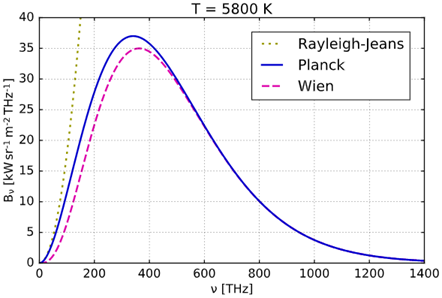Infrared Radiation and the James Webb Space Telescope
The James Webb Space Telescope has reached Lagrange point 2, one and a half million kilometres away, and is getting ready to explore the cosmos in the infrared part of the spectrum. Expansion of the universe means that after 15 billion years the light emitted by the earliest galaxies has stretched so that it is now in the infrared part of the spectrum. In this blog, we focus on the discovery and use of infrared radiation.
At Lagrange point 2 the James Webb Space Telescope will be shielded from much of the sun’s glare, and with the help of its own sunshades the telescope’s temperature can be kept to -225°C. This will ensure that the infrared camera will not be ‘flooded’ by thermal radiation which would effectively erase any images. Most infrared cameras must be kept cool, and they employ Peltier cooling devices and the faster Joule-Thomson effect coolers.
High-speed infrared camera
Today we use infrared radiation everywhere: measuring temperatures, intruder alarms, searching for people, assessing the health of forests, studying climate change, observing distant galaxies and studying solar system neighbours. Look at the picture below made with a high-speed infrared camera. It shows a cricketer just after the ball has been struck by the bat. You can see where the ball hit as the temperature has been raised. You can also see which side of the ball hit the bat. The camera has caught the rise in temperature just before the thermal energy is dissipated.

Discovery of the radiation — a historic overview
The discovery of the radiation just beyond the red end of the visible spectrum is a fascinating story, as
is the story of the building of infrared detectors. Here are a few highlights (a sort of mystery thriller).
1800: Herschel (1738–1822) discovered the existence of an invisible radiation by placing a thermometer just beyond the red of the visible spectrum and noted a significant temperature rise.
1860: Kirchhoff (1824–1887) stated in 1860 that the energy emitted by a black body was a function of the frequency and the absolute temperature. He challenged the scientific community to find a function which described the form of the black-body radiation. At the time, the shape of the curve, which in fact looks like the Planck curve below, was not very well known in the infrared or low frequency region.
1887: Germany establishes the Imperial Institute of Physics and Technology with one aim: to establish the form of the black-body radiation law.
1893: Wien (1864–1928) discovered the relation between the peak wavelength of the curve and the corresponding absolute temperature. This is known as Wien’s Displacement Law. A short while later, in 1896, Wien stated his Distribution Law which had the shape below. This was very similar to the yet-to-be discovered Planck Law (remember, the infrared region was not well known).

October 17, 1900: Rubens (1865–1922) visits Planck to tell him that his new long wavelength measurements fit the Rayleigh-Jeans curve at low frequency and not the Wien curve. Planck is ecstatic and reveals within a few hours his new formula to Rubens. The next morning, Rubens reports to Planck that the new infrared measurements fit his formula perfectly.
October 19, 1900: Rubens and Kurlbaum (1857–1927) report their results to the German Physical Society at which time Planck reveals his new improved formula. In this formula, he had imagined the energy of the oscillating sources of the radiation as having only certain possible values determined by their frequency, where h was a number which he adjusted to fit the data.
E=nhν
December 14, 1900: Planck (1858–1947) presented his derivation of the distribution law for black-body radiation to the German Physical Society. He could not have known that he had opened a door to the vast new world of Quantum Theory, and all due to the discovery and measurement of infrared radiation.
Monitoring our health and the health of our planet
After this, it remained for the scientific community to improve their methods of detection. Eventually, with the help of semiconductor devices, infrared cameras capable of high speed and extraordinary sensitivity have been developed. The radiation which Herschel discovered in 1800 can now be used to make high-definition images which can monitor our health and that of the planet.
- Check out this activity on the James Webb Space Telescope and calculating Lagrange points.
- Have a look at this classroom activity 'Calculating the position of the James Webb Space Telescope using Python or TI-Basic'
Reference: “Max Planck and the Beginnings of the Quantum Theory,” Martin J Klein, 1961.
